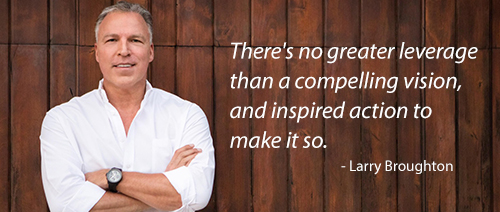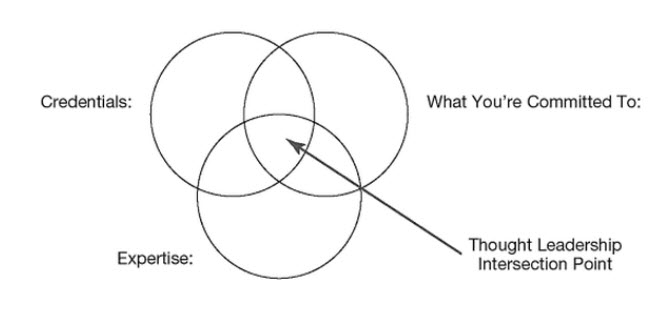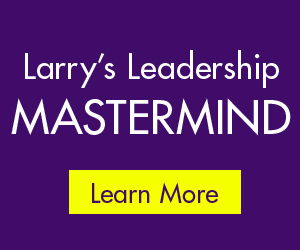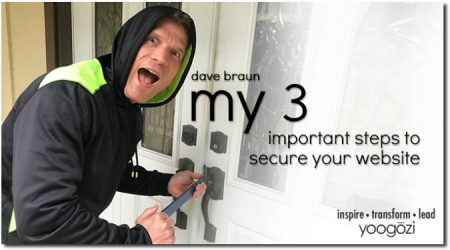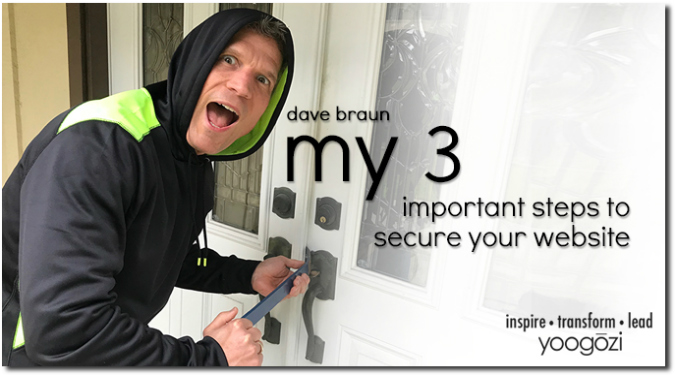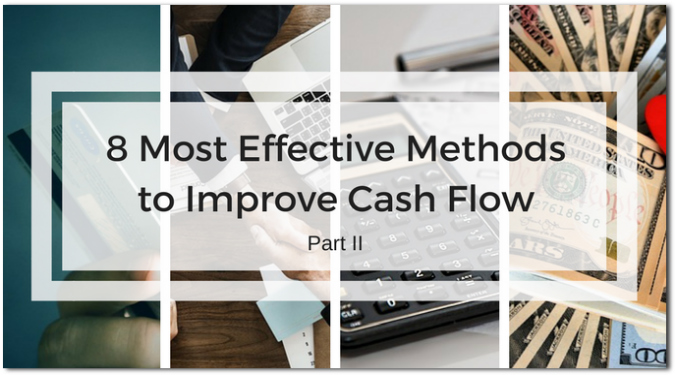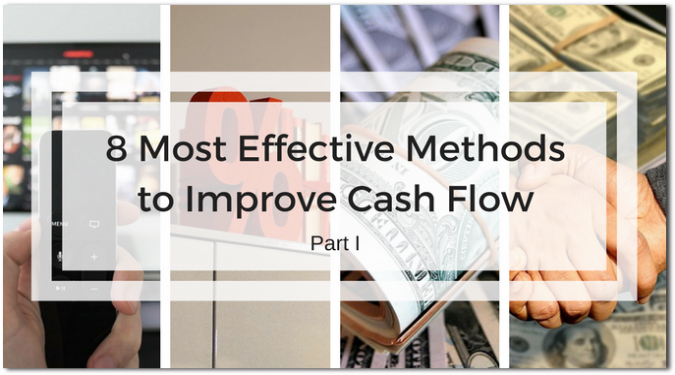8 Essential Elements to Build Your Personal Brand
As an entrepreneur, leader and high achiever, your personal brand is just as important as your business brand. Yet through my own experiences as a serial entrepreneur I’ve learned that the biggest mistake most entrepreneurs make (including me!) is not paying attention to their personal brand.
Previously I posed the question, “Who do you want to be?” and set out the basic formula, (See How to Avoid the Biggest Mistake Entrepreneurs Make) of what makes up your personal brand.
Now let’s take that personal brand and use it to create a buzz. We want to get people talking about you, so clients are calling you and they’re sending you messages on social media that they want to work with you.
I call this overall strategy “setting out the honey pot.”
We’re talking about influence: a style of attraction that allows even the smallest of small businesses to reach thousands or millions of people.
The more we increase our sphere of influence, the better for us and our business. The truth is that 90 percent of consumers and readers trust recommendations of their peers. So if someone has heard of you, they’ve read an article about you, they’ve seen you speak somewhere, or they’ve heard you on a podcast or radio show, and they refer you to a colleague, your reputation jumps up. Even if that colleague knows very little about you or has never heard of you, your “know, like and trust” factor has already gotten a boost.
Our challenge then becomes to find innovative ways to grow our influence in our industry or area of passion.
Over the last several years, I’ve used these eight strategies to grow my personal brand to the point that I receive multiple calls, invitations and requests every day to provide insights in both the hospitality industry and in leadership and entrepreneurship.
Actions to build your personal brand
It doesn’t happen overnight, but these actions do work. Each piece builds on the other until you’ve built a powerful—and naturally attractive—personal brand.
1. Find Your Passion
If you want to grow your personal brand, you must find your passion and figure out who you want to be. Not what you want to be, but who you want to be.
This is why we have the Whole Health Spider Graph
This is why we have our personal mission, values and vision statements.
This is why in my mastermind groups we’re not just focused on how big is your bank account, what’s your balance sheet look like, how many people you’ve fired in the past month, or how many new accounts you’ve gotten.
This Venn Diagram shows how the different elements of your credentials, your area of expertise, and what you are committed to intersect in that sweet spot of where you can become a thought leader.
Take some time to do this exercise and write out
• what your credentials are (e.g., I’m a CPA, or a lawyer);
• what you’re an expert in
• what you’re committed to.
Here’s an example: one of my mentees is a real estate agent who is an expert in residential housing and is committed to helping veterans. So a natural space for him to become a thought leader is addressing homelessness and veterans.
2. Keep a Wisdom Journal
As I’m moving away from working only with entrepreneurs and working more with leaders (because I see there is a greater leadership gap than an entrepreneur gap in this country), I’m seeing that what we lack in this world is wisdom and courage.
 I used to just keep “a journal,” but now I call it a “wisdom journal.”
I used to just keep “a journal,” but now I call it a “wisdom journal.”
It’s just a small notebook that I keep with me. When a thought of brilliance or clarity or zen comes to mind, I write it down. I doodle, I draw, I scribble, or do whatever I need to do to make sure that I can capture that thought or emotion.
I jot down lessons I’ve learned or comments or phrases that really resonate with me. It might be a sentence from an affirmation I’ve listened to, or a comment on a radio show, or a nugget of gold I get from a conversation with an acquaintance at a coffee shop.
Whatever it is, I jot it down and then during my morning or evening routines I go back and I reflect on what it is that I learned. And this wisdom journal is critical for success with strategy #6.
3. Develop a Personal Website
You need a website for you, separate from any business website.
This is a place for you to put your information to showcase your personal brand. For me it’s my yoogozi.com site, and my soon to be launched larrybroughton.me site
• An intriguing biography that tells the story of your accomplishments;
• A press page, where you’ll put any articles, radio/podcast and TV interviews; and
• A place for social proof, so that it’s not just you saying how awesome you are, but shows other people saying that. This might be testimonials or a plug-in showing your Twitter, Facebook, or Instagram feeds—just some kind of social proof.
Here’s an important key to your personal site: if you want to build a brand that attracts quality people, you’ve got to have great photography. We’ve all been to websites where you can tell the person put in very little effort into the photography. Remember, your brand is a reflection of who you are and the services that you’re providing or the type of person that you aspire to be, so invest in great photography.
4. Easy & Social
I’m blown away when it’s hard to find someone on social media. They use weird names that don’t line up with what they do, and I think, “well no wonder your business is flat, or you’re struggling, or you don’t have a following.”
Make it as easy as possible to find you.
I understand that there are so many people on social media platforms now that it’s indeed difficult to get your own name. I missed the opportunity years ago to pick up larrybroughton.com because I thought, why would I ever need that? This was before I realized I needed to build my own personal brand. So, I’ve had to get creative with my domain names.
How much you engage on social media is up to you. It’s okay to have boundaries. I’ve had some challenges with social media with a couple of stalking incidents. And if you’re a parent who has children I’d be very careful about saying where your kids go to school or what neighborhood you live in. But not engaging at all is not an option. Not having social media today is like not having a color television in the old days.
5. Develop Relationships with Influencers
One of the best ways to become an influencer is to reach out and make connections, especially if you can reach influencers in your field.
We need to interview them, talk to them, lean on them and allow them to lean on us. It needs to be a positive relationship, not just one where we’re taking, taking, taking constantly. Here are three ways to do this:
• Connect with those folks who have blogs, who have large tribes. Ask yourself what communities, what tribes do you want to participate in? What community, what tribe are my potential clients participating in? What forums are they going to, where are they hanging out? Identify the key influencers and organizers and reach out to them.
• Interview experts and authorities. They don’t have to be absolutely famous. When I interviewed Barry Griswell (See this video), the former chairman and CEO of Principal Financial, he was running an $8.5 billion company. He started as just a lowly low guy in the organization and worked his way up. Do think there’s something we can learn from him? Just because he’s not Richard Branson doesn’t mean we can’t learn from him.
• Always treat these folks with dignity and respect. Any time you connect with or interview an influencer, be sure to show your appreciation and send a thank you note. Respect their time and show them you appreciate their insights.
So how do you get there? How do you start interviewing people who have big spheres of influence? Start small and interview people you know. Treat them well, do a great job and when you wrap it up, if it went well, ask if there is just one person that they could recommend that you talk to. If you treat them with dignity and respect, most people are going to say “yes, you might want to talk to so-and- so,” and then ask them to make that connection for you.
One of the members of my mastermind program is doing this by interviewing people in the mastermind on his radio show. It’s giving him a lot of experience in doing interviews and getting really comfortable in front of a microphone before he starts interviewing a nationally-recognized rock star business person.
6. Dominate the Media
This is such a powerful strategy and really where the “one to many” concept comes into play. You have to be everywhere:
• Social media – memes and posts
• Blog posts
• Articles – by you and about you
• Books
• Speaking
• Radio & podcasts
• Television
Here’s the key: You have to start writing.
If you want to be a thought leader, if you want to be a world changer, if you want to be at the top of your industry, then like it or not, you have to be a writer. It doesn’t mean 2,500 word essays or submitting articles to Harvard Business Review.
There are really simple ways to start writing.
That’s why you must to start using that wisdom journal (see strategy #2 above):
a. You can convert those brief little thoughts in your wisdom journal into social media memes.
b. Then write a couple of sentences about that in a social media post.
c. Next, find an online forum that talks about that topic and you can write a couple of paragraphs about it.
d. Finally, on your blog you can write an article about it.
See how that builds on each other? All from one great idea in your wisdom journal.
My challenge for you this week is to start your wisdom journal, then take just one idea or thought and turn it into a social media meme and see where you can take it from there.
In a future article I’ll take a deep dive into every element of this strategy so you can develop a solid and integrated media plan to promote your personal brand.
7. Seek Accolades and Awards
This is going to go against the grain for some of you; I know it did for me for years.
Do a search online for: your industry + awards + your city. There are many awards for which you can nominate yourself. Someone, however, has to nominate you for the really prestigious national awards, but once you get one award it’s much easier to get others.
The great thing is, for most of the legitimate awards out there, even if you don’t win, there’s a press release for people who are just nominated. And then with each round, there’s a press release with your name and your company’s name. Often they’ll include a brief bio about you or what your company does, so leverage those micro articles for your website to get more press. This adds to the social proof that you really are as awesome as you say you are.
8. Announce Everything
 Get in the habit of announcing everything about you and your business and doing press releases. Here are some examples:
Get in the habit of announcing everything about you and your business and doing press releases. Here are some examples:
• If you move offices
• If you hire a new vice president
• If you launch a new marketing campaign
• If you’re nominated for an award
Be sure to include interesting visuals with your press release. My hotel company moved offices in December 2013. We asked Santa Claus to attend the grand opening party at the new office. Why? Because we used this picture in our press release. We knew that with this photo, very fitting for December, a publication would print this over any other office opening. (See this online article about the relocation.)
It’s pretty simple to write press releases and there are many articles and online resources to show you how. If you want a shot in the publicity arm, hire a good public relations firm to help with press releases (and even with strategy #7, award nominations). It’s an investment, and one that can pay off with a powerful and attractive personal brand.
And a really great benefit is this: each strategy leads to another; they build on each other.
Years ago in the late 1990s, my hometown newspaper wrote about a leadership award that I won. How did they write about it? Our PR person sent them a press release. The article mentioned my veteran status, which led to me receiving Vetrepreneur of the Year. The producers of the CNBC show, The Big Idea with Donny Deutsch saw that, and they were doing a show called “from battlefield to the boardroom.” So they called and asked me to be on the show. It was Donny Deutsch who first said “hey, you need to make your FLASHPOINTS into a book”.
Then other media hits happened, and the editor of a lodging magazine wrote a story about me. From that (and a great reputation, in concert with referrals from other industry luminaries) we ended up getting the Hotel Impossible gig on The Travel Channel. From Hotel Impossible, our hotel management company signed three new hotels in a matter of months because the owners and investors of these hotels saw the shows and thought that there must be something to this guy and the company he’s built.
All of these elements are connected, but YOU have to connect the dots.


